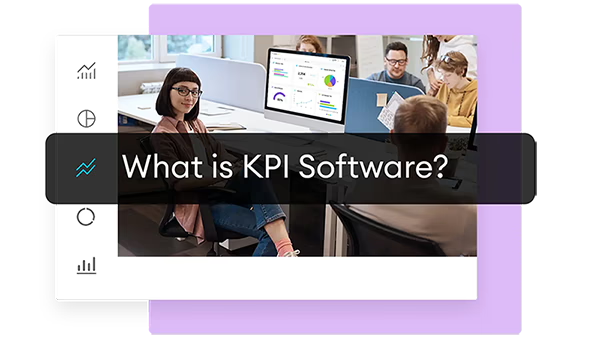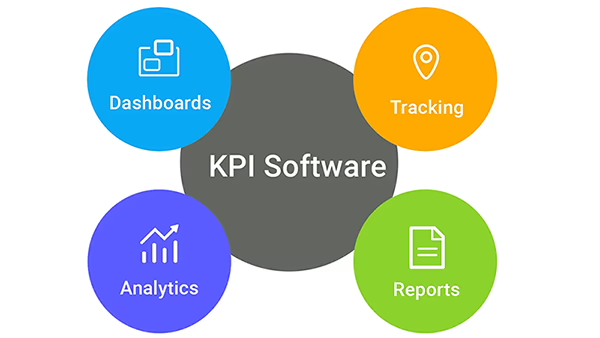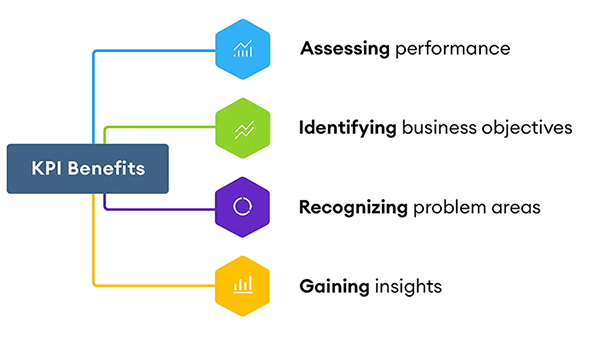What is KPI Software?
KPI Software provides organizations with the capabilities to create, manage, visualize and analyze Key Performance Indicators (KPIs). Typically, data can be entered manually or automated from existing databases and third-party applications. This data is then used to form the basis of KPIs that can be displayed on dashboards and reports.
The software also provides analysis functions that help businesses see how their KPIs are performing against targets, strategic goals or objectives.


How does KPI Software work?
KPI Software uses the data and metrics generated in the day-to-day running of a company and transforms that data into simple indicators that can be used to track progress toward goals. Unlike simple dashboards or reports, KPI Software provides all the tools in one place, from creating custom KPIs from the underlying data to displaying those KPIs on dashboards.
Typically, KPI Software would contain the following elements:
- Ability to create custom KPIs from data.
- Capturing data both manually and automatically via databases or other apps.
- Building custom KPI Reports that can be shared.
- Creating KPI Dashboards that can be displayed on devices and monitors.
- Analytics tools for looking into the data.
Why is KPI Software so important for companies?
Tracking KPIs via software is crucial for companies as it enables them to seize opportunities, identify problem areas, gain valuable insights, and evaluate their progress toward achieving their goals.
Companies that do not track KPIs may miss out on potential growth opportunities and fail to identify improvement areas. Without tracking KPIs, businesses may lack the necessary insights to make informed decisions and optimize their performance. Additionally, they may face challenges in gauging whether they are making progress toward their goals or if adjustments are needed.


What are the benefits of KPI Software?
Anyone who operates a business can confess that collecting KPI data can take an inordinate amount of time, not to mention then collating and reporting on that information. And once all this is done your KPI data is historic, it doesn't allow you to act in a timely manner on the information, limiting opportunities and competitive advantage
KPI software provides businesses with a KPI focused platform to create manage and analyze KPI data. The software allows organizations to enter their KPI (Key Performance Indicator) data into one specially designed system rather than use conventional methods such as spread sheets - which by their very nature are prone to errors.
Companies then benefit from:
- Assessing performance: KPI recording enables companies to evaluate their current state and determine whether they have achieved their desired future state.
- Identifying business objectives: KPIs help companies determine whether they have met their business objectives.
- Recognizing problem areas: By tracking KPIs, companies can identify areas that require improvement and take appropriate action.
- Gaining insights: KPI recording provides valuable insights into a company’s performance, enabling data-driven decision-making and continuous improvement.
The advantages of cloud based KPI Software
Cloud-based KPI Software offers advantages when compared to traditional tracking methods, such as Excel sheets or simple databases. These capabilities provide organizations with a flexible, scalable, and secure platform for monitoring and managing their KPIs with the following benefits:
- Cost savings: Cloud-based KPI software eliminates the need for businesses to invest in expensive hardware and infrastructure. It presents a pay-as-you-go model, allowing you to scale resources up or down based on your needs.
- Improved accessibility: It enhances information access, particularly for remote work teams. Employees can retrieve KPI data and applications from any location with an internet connection, utilizing a range of devices like smartphones, tablets, or laptops.
- Increased collaboration: Cloud-based KPI software allows team members to access and share information securely. This creates collaborative spaces that link employees, boosting interest and engagement.
- Enhanced data security: Cloud services focus on data protection and strong security measures. Typically, this involves providing encryption, regular backups, and disaster recovery solutions to protect sensitive information.

Choosing the right KPI Software
Choosing the right solution for your business can be a challenging task, given the multitude of vendors in the Business Intelligence (BI) market offering a wide range of data-centric solutions1. From data visualization tools like dashboards to complex forecasting systems, numerous options claim to be KPI software. So, how does a business go about selecting the right software for its needs?
Here are some steps to guide you through the process:
- Decide what you need: Allocate adequate time to define and develop the Key Performance Indicators (KPIs) you want to oversee, consider their integration into your business processes, and decide on the tracking methods. This phase may be included in your business plan.
- Do the research: Use search engines to gain insights from others’ experiences. Investigate reliable vendors that specialize in various aspects of KPI management and grasp how they assist their clients.
- Take a trial: Despite thorough research, identifying the right vendor on your first try can be difficult. Utilize free trials provided by vendors and engage your team to evaluate the system's intuitiveness. If needed, feel free to ask for a trial extension if the typical 30-day timeframe falls short.
- Go for an online version: Choosing an online KPI software version provides affordability and easy access, while reducing your commitment if it fails to meet your needs.
- Keep it all in one place: Choose a system that consolidates entry, reports, analysis, and dashboards in one place. This approach not only ensures cost-effectiveness but also avoids the need for costly integration exercises down the road.
- Consider costs: Using a comprehensive vendor application for the entire BI stack can be excessive and costly, particularly for those new to KPI software. Instead, choose a vendor that meets most of your needs while avoiding the pricier features like forecasting.
By following these steps, you can navigate the process of selecting the right KPI software for your business more effectively.
